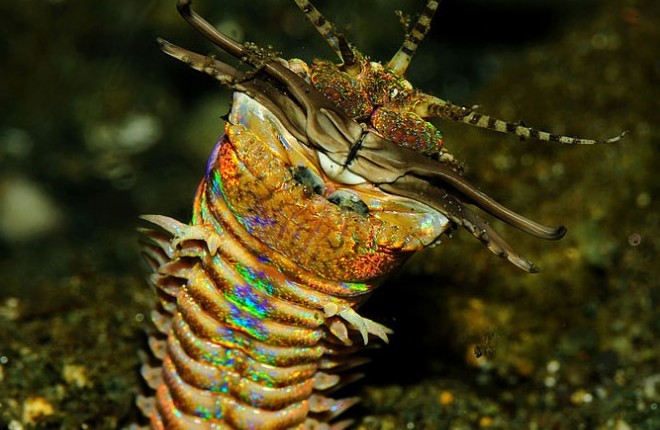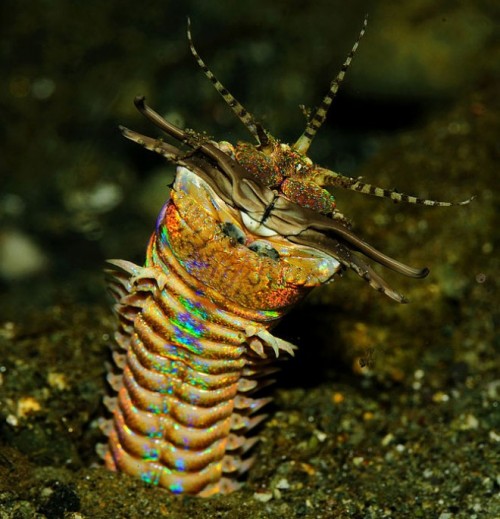Mysterious terror of the tropical seas: Meet the Bobbit worm [video]
Posted by staff / September 9, 2013 Bobbit wormMatt SimonMongolian death worm

What’s ten feet long, has jaws powerful enough to snap a passing fish in two, could be haunting your aquarium and comes in the colors of a happy rainbow of death?
Meet the Bobbit worm, possibly named after the news story that still makes men shudder the world over.
According to Wired‘s Matt Simon:
Using five antennae, the bobbit worm senses passing prey, snapping down on them with supremely muscled mouth parts, called a pharynx. It does this with such speed and strength that it can split a fish in two. And that, quite frankly, would be a merciful exit. If you survive initially, you get to find out what it’s like to be yanked into the worm’s burrow and into untold nightmares.
A mix between the Mongolian death worm, the Graboids from Tremors, the Bugs from Starship Troopers, and a rainbow.“What happens next is rather unknown, especially because they have not been observed directly,” Luis F. Carrera-Parra and Sergio I. Salazar-Vallejo, ecologists specializing in annelid polychaetes at El Colegio de la Frontera Sur (ECOSUR) in Campeche, Mexico, wrote in a joint email to WIRED. “We think that the eunicid injects some narcotizing or killing toxin in their prey animal, such that it can be safely ingested — especially if they are larger than the worm — and then digested through the gut.”
Not only are they still somewhat a mystery, they can hitch a ride on coral as babies into aquariums and wreak havoc on the fish without anyone knowing they’re in there.
Also rather disturbing are their reproductive habits, wherein they shoot killer worm sperm on the surface of the ocean, right where you spent so much hard-earned cash to swim.
So, if you’ve been bitter about not getting that tropical vacation this year, pat yourself on the back and book that Alaskan cruise with confidence.
And buy a hamster.
Full story at Wired.
Photo credit: Wikimedia Commons












[…] Mysterious terror of the tropical seas: Meet the Bobbit worm (holykaw.alltop.com) […]